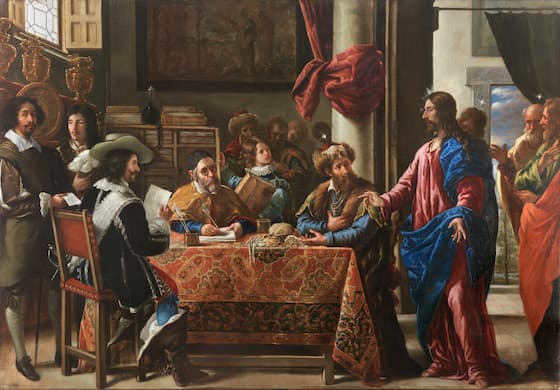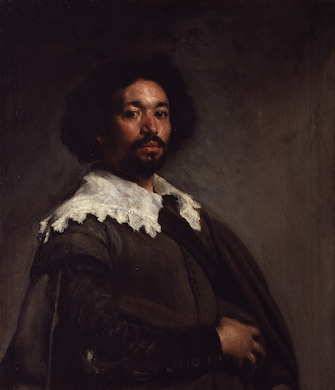Lightening, Somewhat, the Shade Cast by Velazquez
The Met is showcasing the work of a one-time slave and studio assistant to the master painter, Juan de Pareja, within the context of 17th-century Spanish culture.

Juan de Pareja made the front page of the New York Times on May 13, 1971, albeit under the fold. “Metropolitan Was Buyer of $5.5‐Million Velazquez,” the headline reads. The acquisition, the article tells us, was made with some trepidation, as the museum — plus ça change and all that — was under budgetary restraints.
Time doesn’t only heal all wounds, it also unruffles controversy. That multimillion-dollar payout now seems like chump change, particularly given the majesty of the purchase. The collection of the Metropolitan Museum of Art, while not unimaginable without Velazquez’s “Portrait of Juan de Pareja” (1650), would be considerably poorer without it.
“Portrait of Juan de Pareja” is, in fact, one of the most indelible portraits extant. Da Vinci’s “Mona Lisa”? Not bad. Jan van Eyck’s “Arnolfini Portrait” and Domenico Ghirlandaio’s “An Old Man and His Grandson”? Stiff competition. Yet rarely has a sitter been limned with as much dignity, self-possession, and insight as Juan de Pareja. As we stand in front of the picture, oil paint and canvas give way to flesh and blood. Velazquez’s accomplishment is uncanny.
De Pareja wasn’t a nobleman or comerciante seeking immortality through the hand of the court painter to King Philip IV. He was Velazquez’s slave.
When and how de Pareja came into the artist’s life is unknown. The first reliable account of his indenture is mentioned around 1630. The historical record is similarly unclear concerning the specifics of de Pareja’s birth. Writing in the catalog, the Met’s associate curator of European paintings, David Pullins, cites a handful of Roman documents listing de Pareja’s birthplace as Antequera, a city about 30 miles north of the port city of Málaga.
We do know that “Portrait of Juan de Pareja” was a trial run for another indelible painting, that of Pope Innocent X. Velazquez released de Pareja from bondage in 1654.

“Juan de Pareja, Afro-Hispanic Painter” sets out to explore de Pareja’s own considerable career as an artist using Velazquez’s portrait as an anchor. A significant component of de Pareja’s manumission was as an assistant in Velazquez’s studio. De Pareja’s duties there are unknown, as is the nature of his instruction — if any.
Given the level of painterly skill de Pareja achieved, it doesn’t seem a stretch to suggest that he trained a keen eye on what Velazquez was up to. That, and de Pareja’s travels with Velazquez, especially throughout Italy, allowed him direct and relatively rare contact with great paintings.
The Met showcases de Pareja within the context of 17th-century Spanish culture. Four sizable, ambitious, and impressive canvases by de Pareja are surrounded by examples of contemporaneous lusterware, polychrome sculptures, an etching of Rome’s Feast of the Resurrection by Dominique Barrière and “Donatio libertatis” (1960), the document in which Velazquez granted de Pareja his freedom. Paintings by Murillo, Zurbarán, and Palomino are included, as are eight — count ’em, eight — works by Velazquez.
A distinctly 21st-century sensibility is also in evidence throughout “Juan de Pareja, Afro Hispanic Painter.” How could it not be? Picking up on the 1927 essay by Arturo Schomburg titled “In Quest of Juan de Pareja,” Mr. Pullins, along with co-curator Vanessa K. Valdés, posits “Pareja’s story … as a kind of wedge that makes space for entirely new narratives.” Indeed, Schomburg hoped that de Pareja’s example would serve as “a vehicle through which race men will resolve to be more determined to compete for an opportunity to demonstrate their right to partake of all things within their natural gifts.”
Deepening the currents of history — please, let’s not talk of “wedges” — is an enterprise as necessary (and irresistible) as it is prone to political and artistic miscalculation. De Pareja, by virtue of circumstance, is a notable figure deserving of further scholarly research.
By virtue of accomplishment — that is to say, how well his paintings succeed on their own terms — de Pareja stands in the shadow of Velazquez. But, then, so do Murillo, Zurbarán, Palomino, and, for that matter, the rest of us. “Juan de Pareja, Afro Hispanic Painter” doesn’t overturn the canon, but it does shine a light on one of its more heroic sidelines.
Correction: 1650 is the year of “Portrait of Juan de Pareja” and Arturo is the first name of the writer Schomburg. The year and the name were incorrect in an earlier version.

